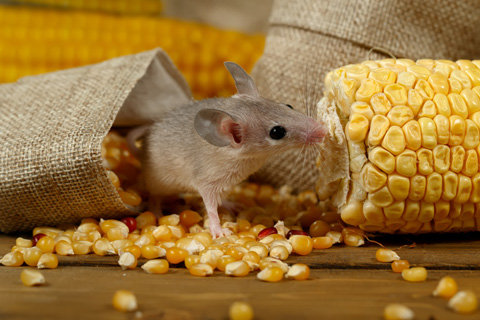Preventative Rodent Control Methods
 Farms across the U.S., and the world, are always under threat of invading rodents. Every year, mice and rats cause millions of dollars in damages to crops, stored grain, buildings, and farm equipment. On top of that, these pervasive critters are known carriers of diseases and bacteria that are transferable to humans. For many farmers, suppressing infestations is a constant uphill battle. When left unchecked, valuable time and money can be lost while trying to recover from the damages that rodents cause. To help you become better prepared, we’ve outlined key techniques for rodent control as well as trapping strategies that you can incorporate around the acreage.
Farms across the U.S., and the world, are always under threat of invading rodents. Every year, mice and rats cause millions of dollars in damages to crops, stored grain, buildings, and farm equipment. On top of that, these pervasive critters are known carriers of diseases and bacteria that are transferable to humans. For many farmers, suppressing infestations is a constant uphill battle. When left unchecked, valuable time and money can be lost while trying to recover from the damages that rodents cause. To help you become better prepared, we’ve outlined key techniques for rodent control as well as trapping strategies that you can incorporate around the acreage.
Preventative Rodent Control
In the drive for survival, rodents are on a never-ending search for food, water, and shelter. By eliminating ideal conditions for vermin to fulfill those needs, you can minimize mouse and rat intrusions on your farm. To do that, implement the following tactics:
- Mow regularly to keep grass short (rodents are less likely to traverse over open areas that don’t offer cover)
- Clean up debris and clutter in and around buildings (wood piles, vegetation, boxes, and other scrap materials)
- If possible, store feed in metal or aluminum containers that have sealable lids
- Do away with any spilled feed (adjust feeders to prevent excess waste)
- When covering up openings in buildings, use rodent-proof materials such as concrete, galvanized steel, brick, and wire mesh
- Routinely check buildings for signs of rodents (droppings, chewing marks on feeders or buildings, strong ammonia smell, and unusual piles of materials that can be used for nesting)
While you can utilize preventive measures, there’s no guarantee that it will stop a rodent problem from happening. If you do discover these crafty critters around your farm, you may consider using traps. Even though trapping may require a little more time and patience, it’s considered to be the safest and most effective method of control for small to medium rodent populations. With that in mind, we will concentrate on different types of traps you can use and the best practices for effective placement.
Trap Placement
Placing traps near rodent activity is the first important step. Mice and rats display different behavioral patterns that may require more specific capture approaches. Snap traps, multiple-catch traps, and glue traps are some of the most common pest products that can be found at a hardware or farm supply store.
Snap Traps
Effectively simple in their design, snap traps–such as the Kness Snap-E® Mousetrap and Big Snap-E® Rat Trap–are relatively inexpensive, easy to set, and can be used multiple times. It’s suggested that this type of trap needs to be set where rodents are most likely to travel and find shelter. This could be along walls, behind corners, or other poorly lit areas.
Traps should be spaced out between 10 to 20 feet apart and can be baited with a piece of meat, peanut butter, or oatmeal. When placing snap traps against a wall, be sure to have the trigger facing the wall. To encourage more interactions between rats and the traps, try pre-baiting the snap traps. Rats will become accustomed to the trap being a part of their environment and will feel more comfortable getting close to it when you decide to arm the devices. For mice that are avoiding traps, keep moving them around; mice are naturally curious about changes in their surroundings.
Multiple-Catch Traps
If you are dealing with a larger mouse population in a barn or shed, multiple-catch traps–such as the Kness Ketch-All® Multiple-Catch Mousetrap–can be used to contain the issue. This type of trap is designed to capture mice alive by exploiting their sense of curiosity as bait. The device features tunnel openings that entice the rodents to enter the trap, and a mechanism “sweeps” them into a cage compartment when the trigger is activated. Place this trap parallel 1 1/2” to 2” from the wall, with the entrance hole facing the wall.
When using live traps, you have a few disposal options once you’ve caught the pests. If you plan to release them back into the wild, be mindful of where you let them loose. Various studies indicate mice have the ability to find their way back to nesting areas from as far away as 6 miles. Relocating mice to a remote, sparsely populated site is highly recommended.
Glue Traps
Compared to other traps, adhesive solutions–like Kness Stick-All®–are more of a passive form of catching rodents. The glue ensures that when a pest walks over it, they become stuck. Some glue traps are pre-scented to attract pests. Position glue traps up against the wall along the rodent’s pathway or area of activity. Be sure to keep it out of places where children or non-target animals could come in contact with it.
Find more information about rodents in our Pest Control Center, and browse our selection of mouse and rat traps.